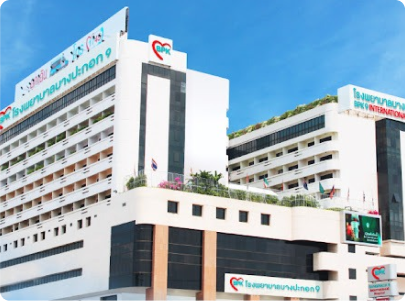Vascular Stenting
The goal of Vascular Stenting is to ensure optimal vascular health by resolving arterial blockages, aneurysms, or vein malformations through precise and often technologically advanced surgical methods.
Get Expert Consultation
Speak with our medical travel experts to get personalized guidance for your procedure
✓ No commitment required • ✓ Expert guidance • ✓ Free consultation

Book Your Free Medical Consultation
Get expert advice—free and easy. Just fill out the form to start your health journey!
Key-Insights for
Vascular Stenting
Procedure Time
Typically takes around 30 minutes to several hours
Recovery Period
Most patients can return to normal activities within a few days
Expected Results
Relieved symptoms, improved blood flow, and reduced risk of complications
Ideal Candidates
People with blockages or narrowing in their arteries, particularly those with peripheral artery disease (PAD) or atherosclerosis
Vascular Stenting
The goal of Vascular Stenting is to ensure optimal vascular health by resolving arterial blockages, aneurysms, or vein malformations through precise and often technologically advanced surgical methods.

People seek these procedures for various reasons:
Aesthetic Enhancement
To alleviate symptoms such as cramping, numbness, or tingling in your legs
Corrective Purposes
To reduce the risk of complications like ulcers or gangrene
Functional Restoration
To improve overall quality of life and mobility
Things to Check Before Treatment
- •Inform your doctor about any medications you're taking, including over-the-counter and prescription drugs.
- •Discuss any allergies or sensitivities with your doctor.
- •Get a detailed medical history from your doctor to identify any potential complications.
- •Ask your doctor about the specific type of stent that will be used and its durability.
- •Make sure you have all necessary travel documents, such as a valid passport and travel insurance.
Potential Risks
- •Bleeding or hematoma at the site of insertion
- •Damage to nearby blood vessels or nerves
- •Infection at the site of insertion
- •Allergic reaction to the stent material
- •Blood clots forming around the stent
How to Choose the Right Country, Clinic, and Surgeon
Do's
Verify surgeon credentials (e.g. ISAPS, JPRAS)
Ask for before-after photos
Check language barriers
Review aftercare and follow-up options
Consider local laws on medical malpractice
Don'ts
Don't Choose a Clinic Based Only on Price
Don't Rely Solely on Social Media or Influencers
Don't Ignore Language Barriers
Don't Rush Into Surgery Without Research
Don't Assume You Can Fly Back Immediately
CureMeAbroad Services Are Absolutely Free.
You pay same rates for treatments as in the hospital's original price list.
CureMeAbroad Services Are Absolutely Free.
You pay same rates for treatments as in the hospital's original price list.


Book Your Free Medical Consultation
Get expert advice—free and easy. Just fill out the form to start your health journey!
Vascular Stenting
Frequently Asked Questions
This procedure involves specific medical techniques tailored to address particular health conditions. Your doctor will explain the detailed process based on your case.

Help Me Plan My Treatment Abroad
End to End Treatment Planning Specifically curated as per your need. Just a Call away


Help Me Plan My Treatment Abroad
End to End Treatment Planning Specifically curated as per your need. Just a Call away


Book Your Free Medical Consultation
Get expert advice—free and easy. Just fill out the form to start your health journey!



